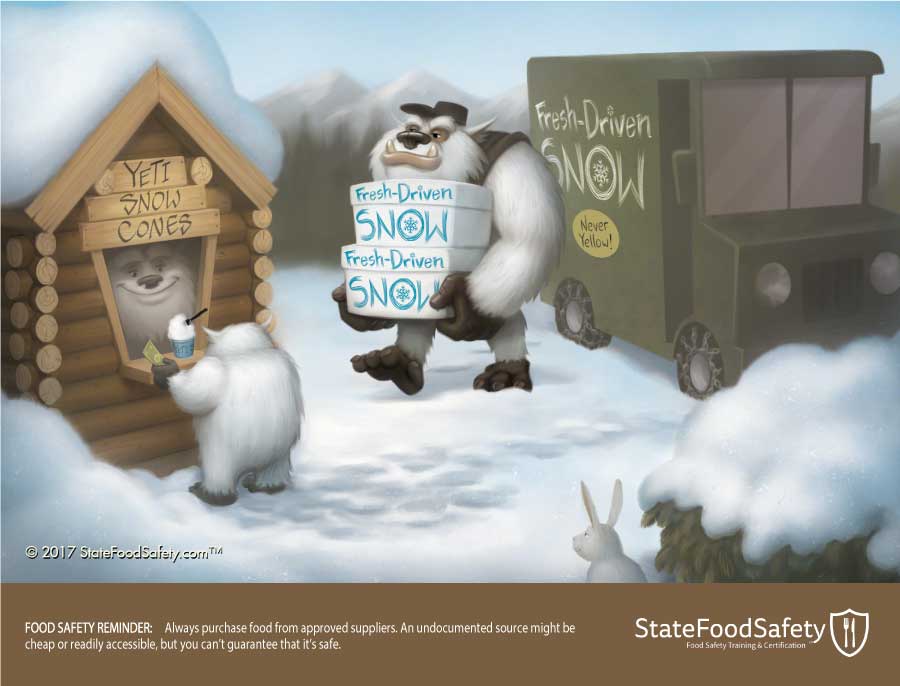Food may travel a long way before it reaches customers’ plates, and a lot can go wrong during harvest, processing, storage, and delivery. Fish and shellfish can be harvested from contaminated waters, pests can get into food stored on warehouse floors, and without proper refrigeration in delivery trucks, bacteria can thrive in foods like meat, eggs, and dairy products. Unfortunately, washing and cooking food can’t always make it safe again. That’s why it’s so important for restaurants and food stores to buy food from approved suppliers—in other words, suppliers that are regulated by a health department.
Three tips when choosing approved suppliers:
1. Ask for approval records
The first thing to verify when choosing a supplier is that it is, in fact, approved. Approved suppliers should have records of regulatory permits, licenses, or inspection reports. You may also ask for evidence that a supplier complies with third-party standards such as HACCP or HARPC certification.
2. Conduct supplier audits
Audits are also a great way to ensure that a supplier meets your establishment’s needs. During an audit, you can observe the supplier’s manufacturing practices firsthand and ask questions as necessary. HACCP Mentor cautions, however, that there may be downsides to these audits. To effectively audit a supplier, you need to know what you’re looking for, and you need to invest the time and travel costs to visit the supplier. A high-pressure audit may also strain your relationship with a potential supplier.
3. Make a list of product-specific requirements
Lastly, consider any legal requirements that are specific to foods that your establishment offers. Does the supplier meet those requirements? For example, does a milk supplier pasteurize their products? If your establishment serves raw fish dishes, does your supplier freeze the fish to destroy parasites? Do they keep records of the freezing time and temperature? Does a shellfish supplier use the appropriate identification tags on deliveries?
Understanding product-specific requirements for suppliers can be a challenge. Reach out to your local health department if you have questions. The FDA Food Code is also a good resource for this information.
What to do after selecting a supplier
After you have contracted with a supplier, inspect each food delivery you receive for signs of contamination. These signs may include damaged packages or frozen foods that have started to thaw. Refuse any deliveries with signs of contamination. You should be familiar with your supplier’s return policy before working with them. If you notice consistent problems with a supplier’s deliveries, it may be time to contact or audit the supplier.
Purchasing food from approved suppliers is one of the most important steps you can take to prevent foodborne illness. For more information, check out our article on working with approved suppliers.
Cartoon Calendar Downloads
Download image: December Cartoon
Order a printed calendar by filling out the Resource Request Form.
—Katie Heil




